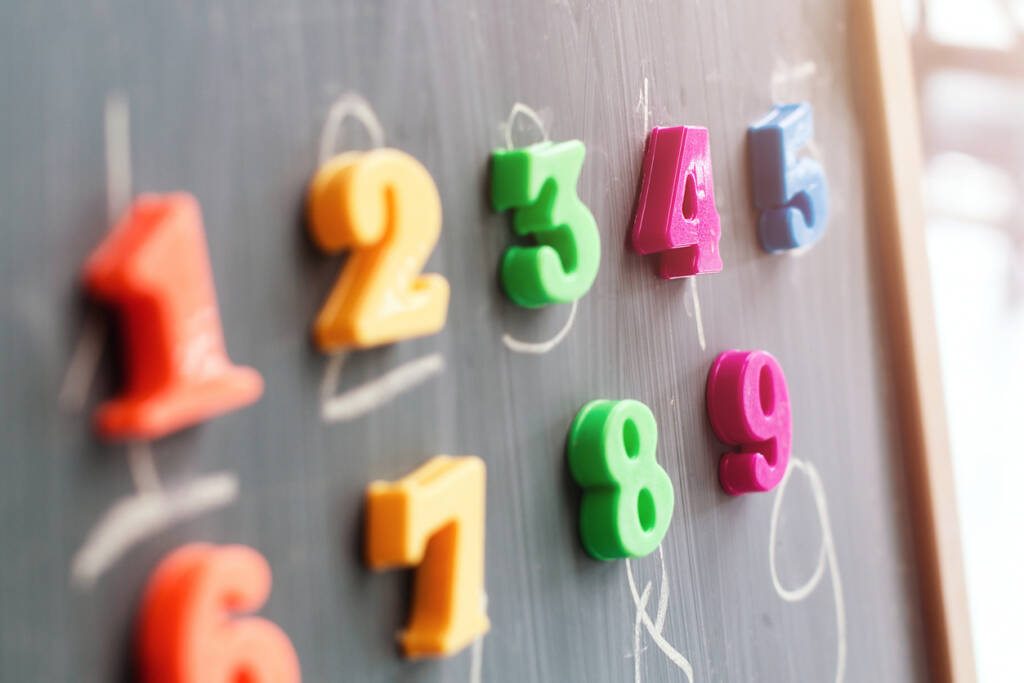
Elementary Math Grade 1

In Math Grade 1, students will use strategies to solve word problems, skip count, and use math strategies to add and subtract. The course provides the opportunity for students to develop an understanding of place value using tens and ones. Students will use this knowledge to add and subtract within 100. Defining and non-defining attributes of shapes is another focus of the course. Other engaging hands-on activities include money, time, data, and measurement.
Please view the Elementary Parents Guide for Grades K-2 with guidance on helping your student transition to online learning and thrive at VLACS.
Major Topics and Concepts
Segment One
- Solving addition equations to 10
- Solving subtraction equations to 10
- Solving addition and subtraction word problems to 10
- Using counting on to solve
- Using doubles strategies
- Using a ten frame
- Counting back to subtract
- Subtracting by adding
- Solving word problems using number facts
- Counting to 120 using a number chart
- Skip counting
- Counting to 120 using a number line
- Gathering groups of 10
- Composing and decomposing two-digit numbers
- Reading numbers in standard, expanded, and written form
- Writing numbers in standard and expanded form
- Finding one more, one less, ten more, ten less
- Counting to 120 using tens and ones
- Compare tens and ones
- Comparing using greater than, less than, or equal to
- Plot, order, and compare tens and ones
- Identify attributes of 2-D shapes
- Drawing and building 2-D shapes
- Creating and combining 2-D shapes
- Identifying and creating equal parts
- Explaining attributes of 3-D shapes
- Composing and identifying 3-D shapes
Segment Two
- Subtract by making 10
- Using fact families
- Using addition to subtract
- Finding missing addends
- Organizing data into groups
- Showing data in different ways
- Answering questions about graphs and data
- Compare and order by length
- Using common items to measure
- Measuring items using a ruler
- Estimating to the nearest inch
- Measuring to the nearest centimeter
- Identifying equal amounts
- Finding the sum of three numbers
- Solving word problems by adding three numbers
- Adding two-digit numbers
- Subtracting two-digit numbers
- Finding ten more and ten less in my head
- Adding and subtracting using models
- Solving addition with regrouping
- Using addition to subtract
- Adding and subtracting using different strategies
- Identifying names and values of coins
- Identifying names and values of bills
- Understanding value of a group of coins
- Counting to a dollar with coins
- Counting bills to 100
- Understanding the hour and the minute hands
- Telling and writing time to the hour
- Telling and writing time to the half hour
Course Materials
To achieve success, students are expected to submit work in each course weekly. Students can learn at their own pace; however, “any pace” still means that students must make progress in the course every week. To measure learning, students complete self-checks, practice lessons, multiple choice questions, projects, discussion-based assessments, and discussions. Students and families are expected to maintain regular contact with teachers because, when teachers, students, and parents work together, students are successful.
Required Materials – Please view the list of materials before registering.
Competencies
Add and Subtract Within Ten
I can solve addition equations for sums within ten using the counting on strategy I can solve addition equations for sums within ten using a doubles strategy. I can model equations using a ten frame. I can solve subtraction equations for a difference within ten using the counting back strategy. I can solve subtraction word problems for a difference within ten using addition facts. I can solve word problems within ten using number facts.
Addition and Subtraction Equations
I can solve addition equations with sums up to ten. I can model addition equations with sums up to ten. I can solve missing addend equations with sums up to ten. I can solve subtraction equations with a difference within ten. I can model subtraction equations with a difference within ten. I can solve addition word problems with sums up to ten. I can solve subtraction word problems with a difference within ten.
Addition Facts to Twenty
I can solve addition equations to twenty using the counting on strategy. I can model addition equations to twenty using an open number line. I can solve addition equations to twenty using a double strategy. I can solve addition word problems to twenty using the make ten strategy. I can explain the make ten strategy for solving addition equations. I can solve addition word problems within twenty.
Comparing Two-Digit Numbers
I can identify one more and one less than a given number within one hundred twenty. I can identify ten more and ten less than a given number within one hundred and twenty. I can identify the number of tens and ones in a two-digit number. I can compare two-digit numbers using mathematical terms and symbols. I can explain the use of a number line to compare numbers.
Extending the Counting Sequence
I can count by ones to one hundred twenty using a number chart. I can count by twos to twenty. I can count by fives to one hundred. I can count by tens to one hundred twenty. I can count up to one hundred twenty using an open number line. I can read numbers up to one hundred in standard form. I can write numbers up to one hundred in standard form.
Shapes and Their Attributes
I can identify two-dimensional shapes based on their attributes. I can describe the attributes of two-dimensional shapes. I can create composite two-dimensional shapes. I can identify equal parts of shapes. I can explain dividing shapes into halves and fourths. I can describe the attributes of three-dimensional shapes. I can identify three-dimensional shapes based on their attributes.
Understanding Place Value
I can model numbers up to nineteen with tens and ones. I can model numbers up to one hundred using tens. I can count up to one hundred using tens and leftovers. I can model two-digit numbers as groups of tens and ones. I can read numbers up to one hundred in standard, expanded and word form. I can write numbers up to one hundred in standard and expanded form.
Adding and Subtracting with Two-Digit Numbers
I can identify ten more or less than a number up to 100 without a resource. I can solve addition equations with a two-digit number and a multiple of ten using an open number line or number chart. I can solve subtraction equations with a two-digit number and a multiple of ten using an open number line or number chart. I can solve addition and subtraction equations using models for tens and ones. I can solve addition equations with a 2-digit number and a 1-digit number with and without regrouping. I can explain the relationship between addition and subtraction. I can solve addition and subtraction equations within 100 using different strategies.
Comparing by Measurable Attributes
I can compare objects by length. I can categorize a group of objects by length. I can calculate the length of an object using smaller objects. I can calculate the length of objects to the nearest inch using a ruler. I can estimate the length of an object to the nearest inch. I can calculate the length of objects to the nearest centimeter using a ruler.
Evaluating Addition and Subtraction Equations
I can identify the missing number in addition and subtraction equations. I can explain the meaning of an equal sign. I can identify true and false equations. I can solve addition equations with three addends. I can solve addition word problems with three addends.
Representing and Organizing Data
I can categorize data into groups. I can model a set of data in different ways including pictographs and bar graphs. I can explain the use of tally marks to represent data. I can evaluate data in graphs to answer questions.
Subtraction Facts to Twenty
I can solve subtraction equations within twenty using the counting back strategy. I can solve subtraction equations within twenty using the make ten strategy.. I can solve subtraction equations within twenty using addition facts. I can identify number fact families within twenty. I can explain subtraction strategies within twenty. I can solve subtraction word problems within twenty. I can identify the missing number to make a group of ten.
Telling Time
I can identify the hour hand on an analog clock. I can identify the minute hand on an analog clock. I can describe the steps to tell time to the nearest hour. I can describe the steps to tell time to the nearest half-hour. I can write the time to the nearest hour. I can write the time to the nearest half-hour.
United States Coins and Bills
I can identify United States coins. I can identify the value of United States coins. I can identify United States Bills. I can count to a dollar using pennies, nickels, dimes and quarters. I can calculate the value of a group of pennies, nickels, and dimes up to one dollar. I can count to one hundred dollars using one, five, and ten dollar bills.

